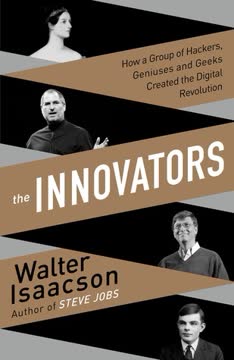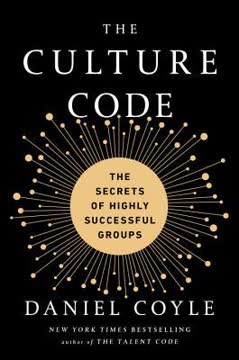Key Takeaways
1. Dare to Be Different: Outrageous Marketing is Essential
If you aren't willing to take a few risks in marketing, become a bean counter.
Safety is a myth. Conventional marketing, while seemingly safe, is actually the riskiest path. In a crowded marketplace, blending in is a recipe for obscurity. To truly stand out and achieve remarkable growth, businesses must embrace unconventional, even outrageous, strategies.
Outrageous is not reckless. Outrageous marketing isn't about being foolish; it's about being imaginative, politically incorrect, and willing to be laughed at. It's about prioritizing revenue above all else and dropping assumptions to start with a fresh perspective. It's about being different, which is the only truly safe way to market.
Examples of outrageous marketing:
- A newspaper boy giving away free papers to gain subscribers
- A basketball team handing out jockstraps to every fan
- A company giving away its software for free to gain market share
By embracing the unconventional, businesses can break through the noise and achieve staggering revenue increases.
2. Aim High: Define "Best" and Strive for It
When you aim for the top, you make important progress by just the aiming.
Beyond incremental goals. Most businesses focus on incremental improvements, asking, "How can we improve our profit over last year?" Instead, ask, "What's it going to take to be the best in our industry this year?" This shift in perspective forces you to think bigger and set more ambitious goals.
The power of aiming high:
- It forces you to think beyond the status quo
- It inspires creative problem-solving
- It motivates you to push your limits
- It leads to breakthroughs and unexpected results
Examples of aiming high:
- A basketball team asking, "What's it going to take to win the championship this year?"
- A marketing department asking, "What's it going to take to be the best in the industry this year?"
By setting audacious goals, you create a powerful force that drives innovation and propels your business to new heights.
3. Push the Envelope: Embrace the Unconventional
There's no risk in pushing the outrageous envelope.
Bland is bad. Bland marketing is safe, politically correct, and avoids laughter, but it's also ineffective. It doesn't make buyers think, touch their emotions, or motivate them to buy. To truly stand out, you must push the outrageous envelope.
The process of pushing the envelope:
- Start in the privacy of your own office
- Write down an outrageous idea
- Imagine the upside
- Consider the negatives
- Test the idea with staff members
- Refine the idea based on feedback
Examples of pushing the envelope:
- Changing a minor-league baseball team's name to "51s"
- Handing out jockstraps at a basketball game
- Giving away free software to gain market share
By embracing the unconventional, you can create marketing campaigns that are memorable, effective, and generate significant buzz.
4. Know Thyself: Define Your True Business
If you correctly identify yourself, you can hit the jackpot.
Beyond the obvious. Many companies define themselves too narrowly, limiting their potential for growth. Railroads thought they were in the railroad business, not the transportation business. Smith-Corona thought they were in the typewriter business, not the word processing business.
The importance of self-definition:
- It opens up new opportunities
- It allows you to adapt to changing markets
- It helps you stay ahead of the competition
- It enables you to see your business from a fresh perspective
Examples of self-definition:
- A sports team realizing it's in the entertainment business
- A magazine company realizing it's in the branded information business
- A computer company realizing it's in the made-to-order business
By understanding your true business, you can unlock hidden potential and create a more sustainable and profitable future.
5. Focus on the Feet: Revenue First, Always
Examine the feet before you operate on the brain.
The sales staff is key. When a company is struggling, the first place to look is the sales staff. They are the feet of the organization, the ones who bring in the revenue. Focus on their training, morale, and tools before making changes at the top.
Signs of a struggling sales staff:
- Low morale
- Inadequate training
- Too few sales calls on new prospects
- Not enough salespeople
The importance of revenue:
- All major corporate problems stem from inadequate revenue
- You can't have too much revenue
- Revenue is the lifeblood of any business
Examples of focusing on the feet:
- Increasing the number of salespeople
- Providing better training and tools
- Creating more attractive ticket packages
By prioritizing revenue and empowering the sales staff, you can create a powerful engine for growth.
6. Hit 'Em Where They Ain't: Avoid Direct Competition
If you mimic the market leaders, you'll just add to their dominance.
Don't follow the herd. Competing directly with market leaders on their terms is a losing proposition. Instead, find a niche where you can differentiate yourself and avoid head-to-head competition.
Strategies for avoiding direct competition:
- Target a different audience
- Offer a different product or service
- Use a different marketing channel
- Create a unique brand identity
Examples of hitting 'em where they ain't:
- A local burger chain sponsoring a sports team instead of running TV ads
- A small online service giving away free software instead of competing with established players
- A sports team focusing on families instead of trying to compete with the local team
By finding your own path, you can avoid being crushed by the competition and create a sustainable advantage.
7. Seize the Moment: Act Boldly on Rare Opportunities
When a rare big opportunity comes along and you can't test it, fly without a net.
The winged horse. Opportunity is like a winged horse that flies by quickly. You must be prepared to grab its wing and jump on, even if you can't test the waters first. Hesitation can cause you to miss out on a rare chance for growth.
Characteristics of a rare opportunity:
- It's unexpected
- It's time-sensitive
- It's high-risk, high-reward
- It requires bold action
Examples of seizing the moment:
- A company buying a single commercial during the Seinfeld finale
- A team changing its name to something outrageous
- A company giving away its product for free to gain market share
By acting boldly and decisively, you can capitalize on rare opportunities and achieve extraordinary results.
8. New as a Way of Life: Embrace Constant Innovation
Take an experiment and make it part of your life. Do it again.
The treadmill of innovation. In today's fast-paced world, companies must constantly innovate to stay ahead. This applies not only to product development but also to marketing strategies.
Strategies for embracing constant innovation:
- Make "new" a way of life
- Experiment with new ideas regularly
- Don't be afraid to fail
- Learn from your mistakes
- Keep pushing the boundaries
Examples of constant innovation:
- A sports team creating new ticket packages every six months
- A company constantly testing new marketing channels
- A movie studio using a new marketing strategy for a low-budget film
By embracing constant innovation, you can stay ahead of the curve and create a culture of continuous improvement.
9. Champion Ideas: Empower Your Team to Create
Champion the idea of Idea Champions.
The power of collaboration. Great ideas can come from anywhere, not just the top. By empowering your employees to generate and champion their own ideas, you can tap into a wealth of creativity and innovation.
Strategies for creating a culture of innovation:
- Create a "Think Tank" where employees can brainstorm ideas
- Assign "Idea Champions" to bring ideas to life
- Provide resources and support for experimentation
- Celebrate both successes and failures
The role of the Idea Champion:
- To shepherd the idea
- To sponsor the idea
- To act as a chief operating officer for the idea
- To do whatever it takes to bring the idea to life
By empowering your employees to be creative and innovative, you can create a more dynamic and successful organization.
10. Levels of Cream: Target High-Value Customers
Scoop it off the top and apply it to the bottom line.
Not all customers are equal. Some customers are willing to pay more for a premium product or service. By identifying and targeting these high-value customers, you can significantly increase your revenue.
Strategies for targeting high-value customers:
- Create premium products or services
- Offer exclusive experiences
- Provide personalized service
- Price your products accordingly
Examples of targeting high-value customers:
- A sports team offering premium ticket packages
- A magazine company offering a high-end subscription service
- A company offering a high-priced version of its product
By focusing on the top levels of cream, you can maximize your profits and create a more sustainable business.
11. Build Identity and Buy Now: Combine Branding and Action
Build your identity while you're getting paying customers.
Beyond image. Many companies focus solely on building brand identity, neglecting the need to drive immediate sales. Effective marketing should combine both branding and action, creating a compelling reason for customers to buy now.
Strategies for combining branding and action:
- Use direct-response ads that include a call to action
- Offer limited-time promotions
- Create a sense of urgency
- Provide a clear path to purchase
Examples of combining branding and action:
- A sports team using newspaper ads to sell ticket packages
- A company using infomercials to sell its product
- A company offering a free gift with purchase
By combining branding and action, you can create marketing campaigns that are both memorable and effective.
12. The Slippery Slide: Create a Path to Purchase
Get them going down that slippery slide and you have a chance of selling them something.
The power of momentum. The key to effective marketing is to create a "slippery slide" that leads customers smoothly from initial interest to final purchase. This involves creating a series of steps that are easy to follow and build on each other.
Strategies for creating a slippery slide:
- Use a compelling headline to grab attention
- Create a subheadline that builds interest
- Write copy that keeps the reader engaged
- Provide a clear call to action
- Make it easy to buy
Examples of the slippery slide:
- A FedEx box leading to a rubber chicken, which leads to a letter
- A free software download leading to a paid subscription
- A compelling ad leading to a phone call or website visit
By creating a smooth and engaging path to purchase, you can increase the likelihood of converting prospects into paying customers.
Last updated:
Review Summary
Marketing Outrageously received mixed reviews, with an overall rating of 4.14/5. Many readers found it insightful and inspiring, praising Spoelstra's creative approach to marketing, especially in sports. Some appreciated the personal anecdotes and practical ideas presented. However, critics felt the book was dated, focused too narrowly on sports, and lacked depth beyond its core concept of implementing outrageous ideas to stand out. Despite these criticisms, many readers recommended it for entrepreneurs and marketers seeking unconventional strategies.
Similar Books






Download PDF
Download EPUB
.epub digital book format is ideal for reading ebooks on phones, tablets, and e-readers.




